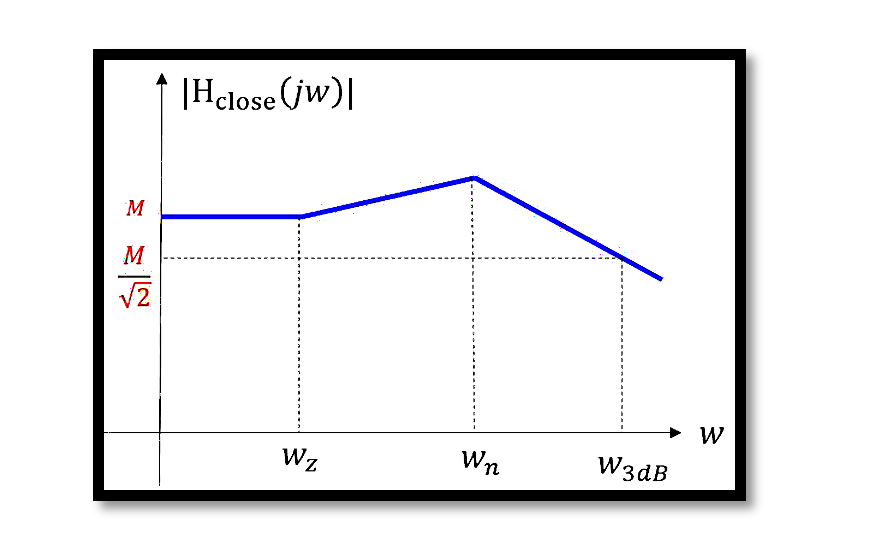
Understanding Close Loop System Consideration
Closed-loop systems are fundamental in control theory, ensuring that the output of a system follows the desired input despite external disturbances. By analyzing the close-loop transfer function, we gain essential insights into the system’s stability, bandwidth, and overall performance. This blog will provide a detailed exploration of these concepts and their implications.
Close Loop Transfer Function
The close-loop transfer function, denoted as Hclose(s), describes the input-output relationship of a system in the frequency domain. This function is crucial for understanding the system’s behavior, particularly in determining poles, zeros, and bandwidth. The general form of the close-loop transfer function is given by:

Importance of Calculating the Close Loop Transfer Function
Understanding the close-loop transfer function is essential for several reasons:
- Finding Poles and Zeros: The poles and zeros of the transfer function provide insights into the system’s stability and response characteristics.
- Determining Bandwidth: The 3dB bandwidth, denoted as ω3dB\omega_{3dB}ω3dB, is critical for assessing the system’s frequency response and performance.
- Phase Noise Calculation: The 3dB bandwidth is used in phase noise calculations, which are crucial in communication systems.
- Bandwidth Adjustment: By tuning ω3dB\omega_{3dB}ω3dB, we can adjust the system’s bandwidth to achieve desired performance metrics, such as spur cancellation.
Poles and Zeros of the Close Loop System
The poles of the system can be determined from the characteristic equation of the denominator of Hclose(s):

These poles and zeros are essential for understanding the dynamic behavior of the system, including its stability and transient response.
Bandwidth Considerations
A key aspect of analyzing the close-loop transfer function is determining the 3dB bandwidth (ω3dB). The 3dB bandwidth is the frequency at which the magnitude of the transfer function falls to M/√2. It is a critical parameter for designing systems with specific frequency response characteristics.

We can determine ω3dB to gain insights into the system’s bandwidth and design requirements for stability and performance. The 3dB bandwidth is crucial for phase noise calculation and for tuning the system’s bandwidth to achieve specific performance goals, such as spur cancellation.
Special Cases
Special cases arise based on the value of the damping factor (ζ):
When ζ=1: In this scenario, the poles are equal, leading to a critically damped system.


When ζ≫1: In this scenario, the system is over-damped, leading to distinct and real poles.


Understanding these special cases helps in designing and tuning the system for optimal performance under different damping conditions.
Take our entry level course (Below) for free using coupon code RAHRF101BLOG
RF Fundamentals, Basic Concepts and Components – RAHRF101
For limited time take an additional 10% off of all our courses using coupon code RFCERT10
Rahsoft RF Certificate and courses
Practical Applications
In practical scenarios, analyzing the close-loop transfer function aids in designing control systems that meet specific performance criteria. By tuning parameters such as ω3dB, engineers can achieve the desired bandwidth, phase noise performance, and stability. This process involves careful selection of components and configuration of the feedback loop to meet the system’s design requirements.
Conclusion
The close-loop transfer function is a fundamental aspect of control system design, providing crucial insights into system stability, bandwidth, and performance. By understanding and calculating the poles, zeros, and bandwidth, engineers can optimize control systems for various applications, ensuring robust and efficient performance. The detailed analysis presented in this blog highlights the importance of these concepts in achieving the desired system behavior.

Learn more about this topic by taking the complete course ‘Phase Lock Loop System Design Theory and Principles RAHRF469’. Watch the course videos for more detailed understanding. Also checkout other courses on RF system and IC design on https://rahsoft.com/courses/. Rahsoft also provides a certificate on Radio Frequency. All the courses offer step by step approach.



